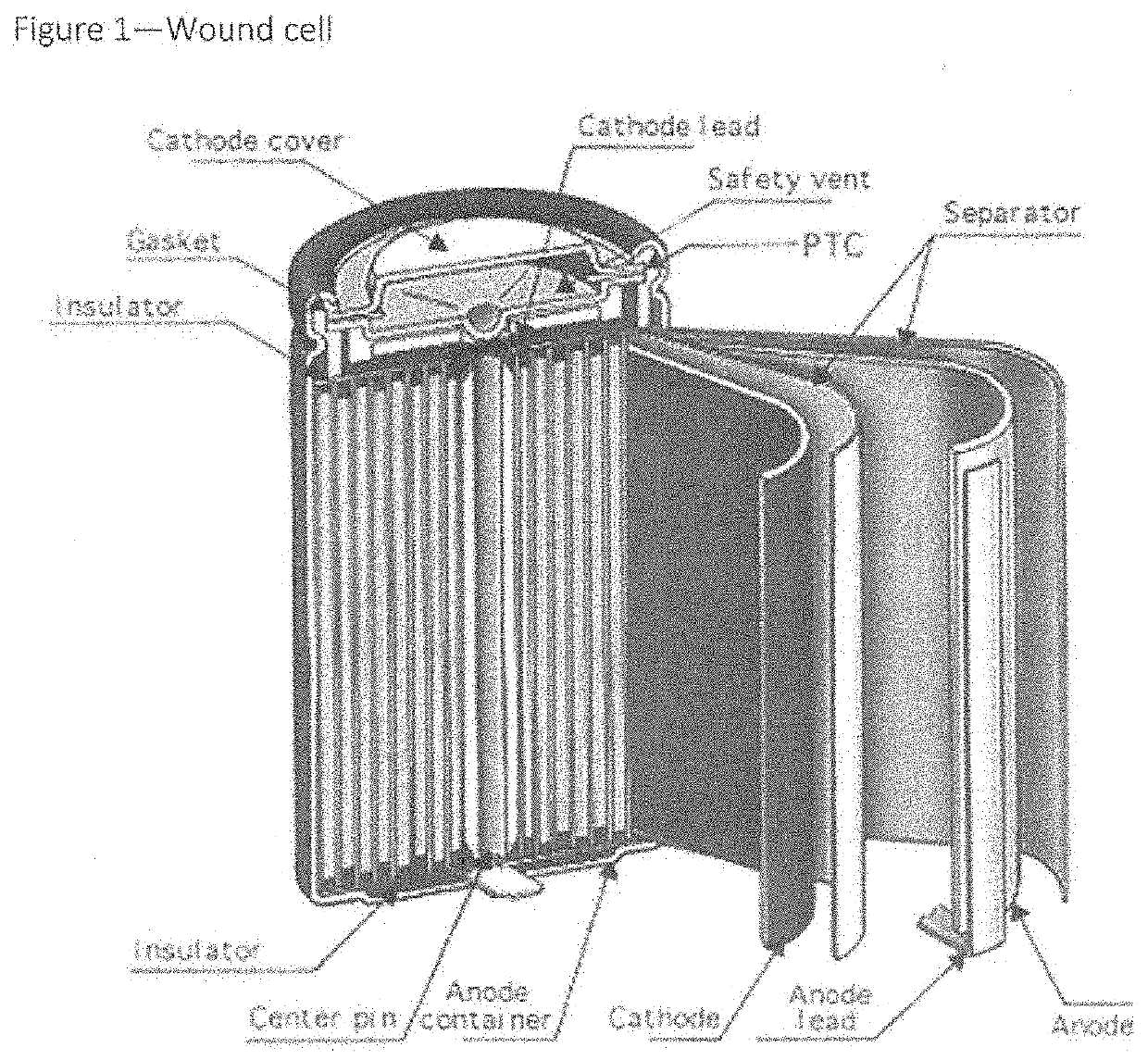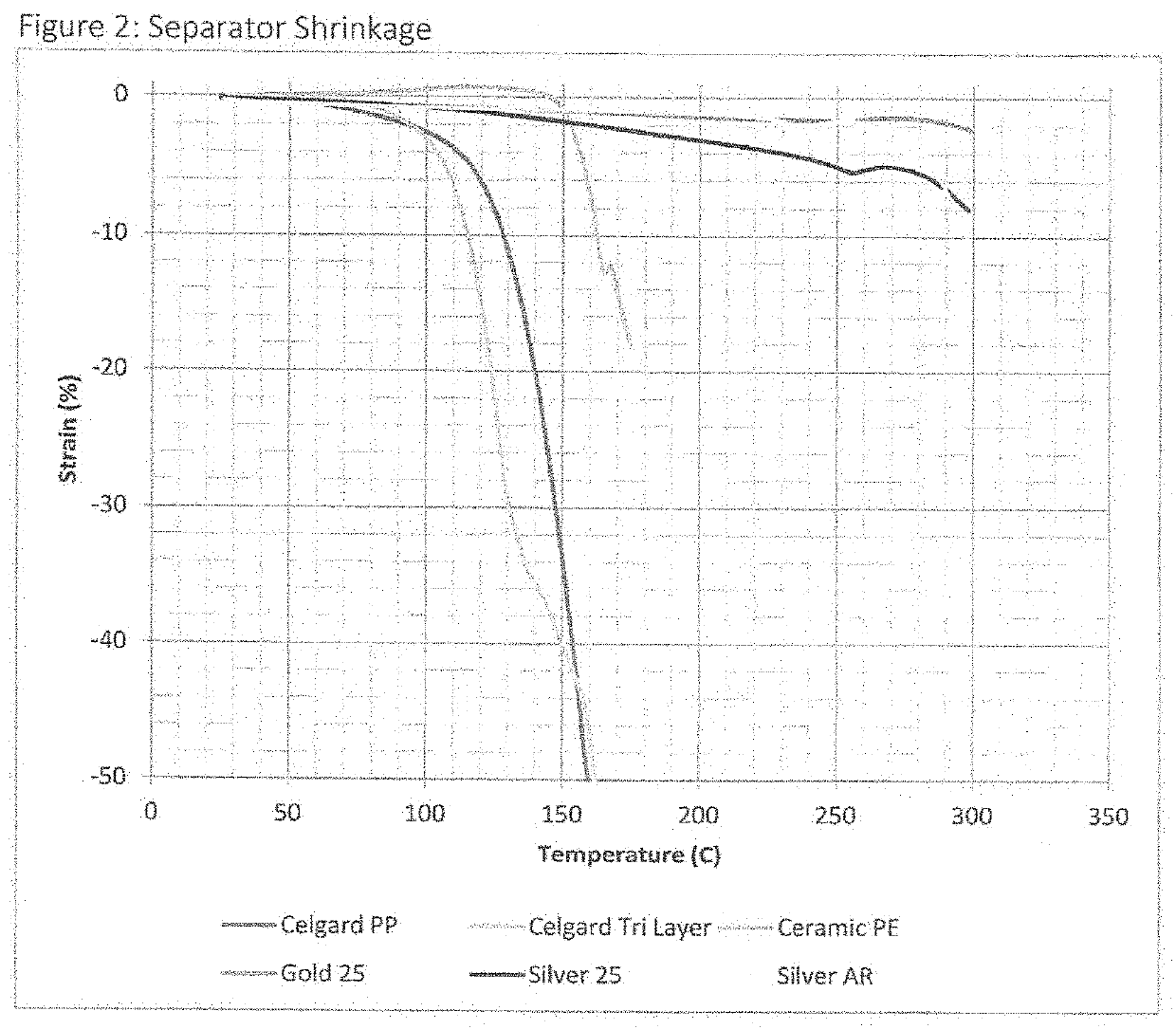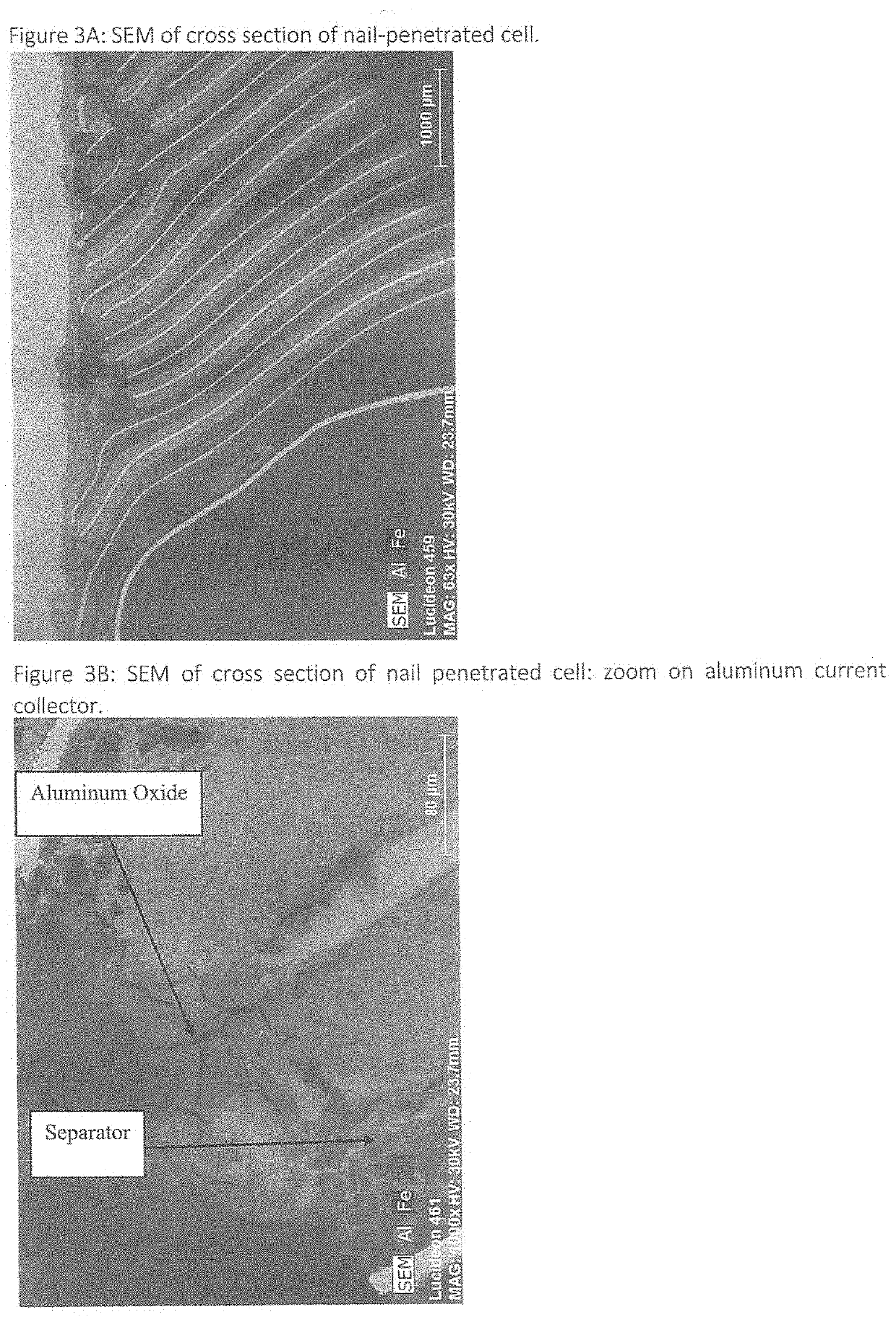Battery connections and metallized film components in energy storage devices having internal fuses
a technology of energy storage devices and metallized film components, which is applied in the direction of batteries, sustainable manufacturing/processing, wound/folded electrode electrodes, etc., can solve the problems of thermal runaway events within the target battery cell, the subject battery, the device/implement within which it is present, and the surrounding environment, so as to reduce the flow of current, reduce the weight, and improve the effect of weight and cos
- Summary
- Abstract
- Description
- Claims
- Application Information
AI Technical Summary
Benefits of technology
Problems solved by technology
Method used
Image
Examples
example 1
[0087]Polypropylene lithium battery separator material was obtained from MTI Corporation. The material was manufactured by Celgard with the product number 2500. The thickness, areal density and resistance were measured, which are shown in Table 1, below. The separator was then touched with a hot soldering iron in the same way as Example 1. Touching the thermometer to the current collector created a small hole. The diameter was measured and included in Table 1. The thickness, areal density and resistance were measured. The material was placed in an oven at 175° C. for 30 minutes and the shrinkage measured. A photograph was taken and included in FIG. 7A.
example 2
[0088]Ceramic coated polyethylene lithium battery separator material was obtained from MTI Corporation. The thickness, areal density and resistance were measured, which are shown in Table 1, below. The separator was then touched with a hot soldering iron in the same way as Example 1. Touching the soldering iron to the current collector created a small hole. The diameter was measured and included in Table 1. The thickness, areal density and resistance were measured. The material was placed in an oven at 175° C. for 30 minutes and the shrinkage measured. A photograph was taken and included in FIG. 7B.
example 3
[0089]Ceramic coated polypropylene lithium battery separator material was obtained from MTI Corporation. The thickness, areal density and resistance were measured, which are shown in Table 1, below. The separator was then touched with a hot soldering iron in the same way as Example 1. Touching the soldering iron to the current collector created a small hole. The diameter was measured and included in Table 1. The thickness, areal density and resistance were measured. The material was placed in an oven at 175° C. for 30 minutes and the shrinkage measured. A photograph was taken and included in FIG. 7C.
PUM
| Property | Measurement | Unit |
|---|---|---|
| temperatures | aaaaa | aaaaa |
| shrinkage | aaaaa | aaaaa |
| temperatures | aaaaa | aaaaa |
Abstract
Description
Claims
Application Information
 Login to View More
Login to View More - R&D
- Intellectual Property
- Life Sciences
- Materials
- Tech Scout
- Unparalleled Data Quality
- Higher Quality Content
- 60% Fewer Hallucinations
Browse by: Latest US Patents, China's latest patents, Technical Efficacy Thesaurus, Application Domain, Technology Topic, Popular Technical Reports.
© 2025 PatSnap. All rights reserved.Legal|Privacy policy|Modern Slavery Act Transparency Statement|Sitemap|About US| Contact US: help@patsnap.com



